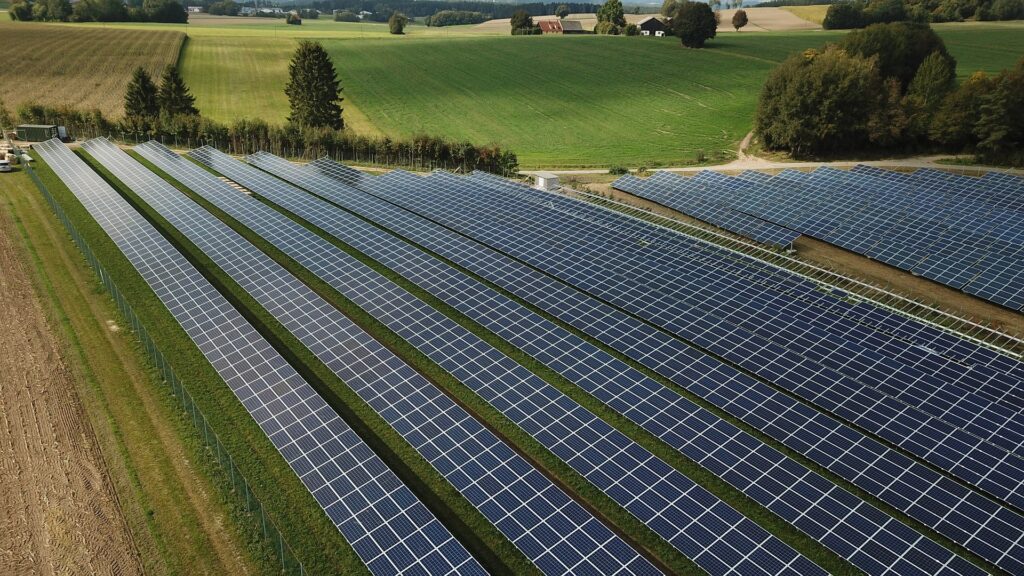Why has solar power become cheaper? This question is raised significantly, especially after building a new solar energy station at a much lower cost than building a new fossil fuel station of the same capacity. How true is that statement? What are the factors that worked to reduce the cost of installing solar energy systems? There are many questions that you may now have in your mind about solar systems and fossil fuels, so let me answer them below.

Why has solar power become cheaper
Why has solar power become cheaper? Has the cost of solar energy decreased?
Yes, the cost of installing solar energy decreased dramatically between 1998 and 2009 by 30%. It has also continued to decrease by another 70% from 2010 to the present day. The reason behind this lies in several factors, which are manifested in the following:
Lower manufacturing costs
Modern technologies used in manufacturing are the main reason for the low cost of installing solar energy systems. In recent years more and more efficient panel designs have been developed with fewer resources. This helps the manufacturers to save money thus manufacturing these products at affordable prices.
In addition to low labor costs in some countries such as China, the average wage for a worker there is about $3.60 per hour, while the average wage in the United States is about $21 per hour.
Affordable low costs
Soft costs are costs that are not directly related to purchasing the necessary equipment, including solar panels, inverters, etc. Those costs have decreased significantly over the past twenty years, as a result of several factors: first, increasing the efficiency of companies, and the Internet has played a big role in that, as it facilitated the process of marketing and acquiring customers more than it was in 1998. The second is due to the installation process, as modern panels come Weighing less and more securely than in the past, mounting systems are easier to use and installers are more experienced.
Government investment and financial incentives
In 2011, the Solar Energy Technologies Office (SETO) at the US Department of Energy launched an initiative called SunShot to make solar power competitive with conventional electricity sources. SETO has also streamlined operations in collaboration with industry partners and research laboratories, funding them millions to improve solar cell technology and manufacturing systems.
Financial incentives from the federal government have also reduced the cost of solar energy systems, most notably the Renewable Energy Investment Tax Credit (ITC). The International Trade Center offered citizens to claim a tax deduction equivalent to 30% of their system.
Economies of scale and better financing options
The more panels manufactured, the more manufacturers could make, making it cheaper to ship them. According to Swanson’s Law: As more panels are produced and shipped, their prices drop by 20%.
On the other hand, the lower cost will increase the number of people wishing to install, and thus the prices will decrease even more.
Financing options, whether from the system installer itself or from other sources such as Clean Energy Loans (PACE) in Colombia, also played for people wanting installers to increase the number of panels installed and thus lower costs, according to Swanson’s Law.
Now, you know the costs of installing solar energy systems.
And Why has solar power become cheaper? You’ll wonder how effective it is before you install it. Are solar panels getting smaller and more efficient?
Is solar energy cost-effective?
Yes, of course, solar energy systems are highly effective, as there is no fuel to burn after their installation, and the operating costs are very low compared to other forms of energy generation, so there are no costs for securing fuel supplies.
Solar energy vs fossil fuels statistics
The efficiency of solar panels ranges from 15% to 20%, while the efficiency of coal is about 40% and that of natural gas is about 60%. On the other hand, the energy from fossil fuels and coal is used once and then fades away forever, while solar energy is renewable and lasts forever.
Is renewable energy cheaper?
Yes, renewable energy systems are cheaper than fossil fuels, according to the International Renewable Energy Agency (IRENA) in 2021: two-thirds of renewable energy systems currently installed cost cheaper than fossil fuels, and they will do to get more affordable.
Then, you might be wondering:
Is buying solar panels worth it? Are solar panels worth it in the long run? How long will solar panels last?
Is solar energy cheap or expensive?
In fact, despite the high initial costs of solar panels and their installation, they will last for a long time and provide you with free electricity. If we make a comparison between solar energy and fossil fuels in terms of supply, we will find:
Is solar energy cheaper than fossil fuels
It is true that the cost of primary solar energy systems is higher than the cost of conventional energy systems, but after installing them, you will gain energy and save money for a long time.
Cheapest energy source per kWh
The average kWh price for fossil fuels starts at $0.05 and $0.17, while the kWh price for solar energy starts from $0.03 to $0.06.
Natural gas vs solar energy cost analysis?
Solar power systems are 33% cheaper than gas power in the US right now, Guggenheim-Bloomberg reports.
Is renewable energy cheaper than nuclear energy?
An analysis of Levelized Energy Costs (LCOE) conducted by the investment bank Lazard reports that wind and solar are 5 times cheaper than nuclear.
However, despite solar energy systems’ advantages, they are not without flaws. What are the negatives of solar energy? What is the main problem with solar power?
What are the 3 cons of using solar panels?
What is the biggest downside to solar electricity?
The most prominent disadvantage and the problem of solar energy in the world are that if the panel energy does not flow to the inverter, it will become overloaded and therefore radiate a lot of heat and become “hot”. Which reduces the performance and life of the board and sometimes cannot be repaired.
What are the 2 main disadvantages of solar energy?
The main disadvantages of solar energy lie in two main hands:
- Solar panels take up a lot of space when installed.
- Its work is limited to sunrise hours, and its supply is cut off at night hours and on cloudy winter days.
Next, the question you might ask after you get to know:
Why has solar power become cheaper? Will prices continue to fall, and for how long?
The future of falling prices
According to California-based solar startup PowerScout: The cost of solar power will continue to decline by 4.4% each year through 2022.
In short, the answer to the question: Why has solar power become cheaper? lies in the development of manufacturing techniques, and the increase in the number of solar panels installed as a result of support and financing.
